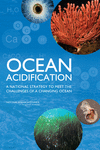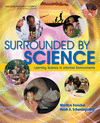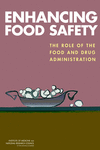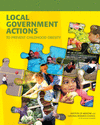“There are only four kinds of people in the world: those who have been caregivers; those who are currently caregivers; those who will be caregivers; and those who will need caregivers.” –Former First Lady Rosalynn Carter
People with temporary or chronic conditions monitor themselves or others with daily use of medical devices such as blood pressure cuffs, blood sugar test strips, or heart monitors. Others use medical devices such as nebulizers or physical therapy aids to maintain or improve their own or someone else’s health. These procedures and many others may or may not be done with a health care professional on-site. A wide range of procedures and therapies are now performed far from any medical facility. Although each situation is unique, all are dependent on the people involved—the human factors.
The study of human factors focuses on the interactions between people and the other elements of a system, generally with the goal of optimizing safety and performance. Elements of the system may include tasks, technologies, and environments, as well as other people. The success of these interactions is dependent on the degree to which the physical, sensory, cognitive, and emotional capabilities of the people match the corresponding demands imposed by elements of the system.
Health Care Comes Home: The Human Factors is a wide-ranging investigation of the role of human factors in home health care. This book examines a diverse range of behavioral and human factors issues resulting from the increasing migration of medical devices, technologies, and care practices into the home. Health Care Comes Home lays the groundwork for a thorough integration of human factors research with the design and implementation of home health care devices, technologies, and practices.
The Role of Human Factors in Home Health Care: Workshop Summary provides information on human factors aspects of home health care. This book promotes awareness of the challenges of home health care and provides practical information that can be used by providers of home health care.
In addition, the authoring committee of Health Care Comes Home oversaw preparation of a designers’ guide for the use of health information technologies in home-based health care. Consumer Health Information Technology in the Home: A Guide for Human Factors Design Considerations introduces designers and developers to the practical realities and complexities of managing health care at home. This booklet provides guidance and human factors considerations that will help designers and developers create consumer health information technology applications that are useful resources to achieve better health.
Together, these books and materials are a useful tool for organizations and people concerned with health care in the home. These publications bring attention to both the serious challenges of providing quality home health care, and to the efforts to address those challenges.
| Health Care Comes Home: The Human Factors
In the United States, health care devices, technologies, and practices are rapidly moving into the home. The factors driving this migration include the costs of health care, the growing numbers of older adults, the increasing prevalence of chronic conditions… |
|
| The Role of Human Factors in Home Health Care: Workshop Summary
The rapid growth of home health care has raised many unsolved issues and will have consequences that are far too broad for any one group to analyze in their entirety. Yet a major influence on the safety, quality, and effectiveness of home health care will be… |
|
| Consumer Health Information Technology in the Home: A Guide for Human Factors Design Considerations
Every day, in households across the country, people engage in behavior to improve their current health, recover from disease and injury, or cope with chronic, debilitating conditions. Innovative computer and information systems may help these people manage… |



























